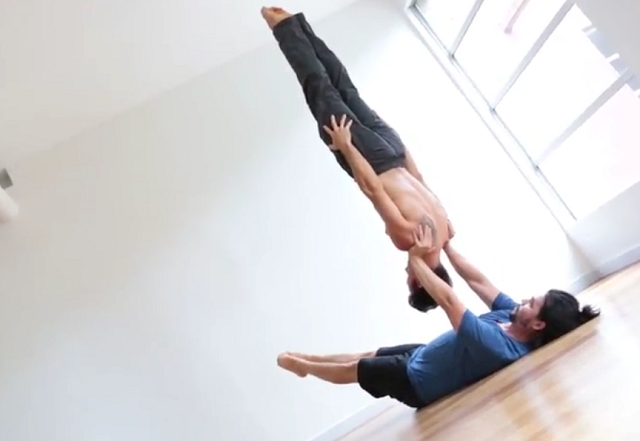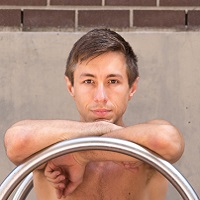I’ve long felt an intense sense of emptiness, a sort of recognition that I was missing a real community, one that was a part of my life from all angles and promoted a deep sense of trust.
As a tradesman, I was committed to the standard nine to five work schedule that seemed to sap away at my feelings of autonomy and empowerment. All of my energy was being outsourced to clients that were completely outside of my personal sphere.
I began to ask the question: “Can our work benefit our own community?”
Then, one day, my monotonous and impersonal life was broken when 500 pounds of drywall fell on my legs. My foot was shattered. The physical trauma was something I struggled to heal from for the following year.
I wasn’t sure I’d be able to run again—I was devastated.
But life works in mysterious ways. What may seem like the world crashing down on us one moment, sooner or later reveals itself to be a necessary breakdown. If we persevere through our struggles and trust the process, then we can take any experience and transmute it into something meaningful and beneficial.
I came to realize that, as a tradesman, I was letting life pass me by. I didn’t trust in life or myself. It turns out the accident was life’s way of pushing me forward. I had to hit a major low to propel myself to major heights, and for that grace I can only respond with gratitude.
I began to study and practice yoga. I could feel my body getting stronger, and on top of it, I was spending time around new people. But then, another problem presented itself.
Yoga has been adopted by western popular culture and while it promotes a deepening connection with self, segregation and isolation permeate yoga studios and the practice of yoga. People arrive to class, respect the silent studio space, and often leave without having truly connected with anyone.
While it’s crucial we take time to connect with our own bodies and check in with our mental and emotional states, there remains a largely untapped potential of yoga: connection with others. I then realized I could synthesize multiple themes from my life by supporting a more connected yoga community.
We’re all seeking to connect with each other. The problem is, it’s hard to find the space or the medium to serve as the platform for building community. I moved towards AcroYoga as the solution to this problem, and have since become the co-founder of Vancityacro in Vancouver.
AcroYoga offers tools to help build community and strengthen relationships through developing trust, communication skills, and shared goals.
For those who may not know, AcroYoga is a partnered activity weaving together the flexibility, strength, and dynamic play of acrobatics and yoga. The practice unites friends, couples or anyone open to connecting with someone new.
AcroYoga involves two symbiotic roles:
The base: This person lays on their back, using their legs and arms to support their partner. This role primarily promotes strength and comfort within a supporting role.
The flyer: This person balances on the limbs of the base while assuming a variety of yogic postures in the air. This role helps to build flexibility, and it supports one’s ability to receive and be supported by another individual.
It’s easy to appreciate how AcroYoga brings people together. Friends practice together instead of side by side, strangers can forge new, intimate connections with fellow classmates, and couples have the opportunity to grow closer and work through challenges.
Devon French, one of the co founders of VanCityAcro, has become one of my dearest friends through this practice. When we first met, I saw somebody who was dedicated and committed to self-development, and this shared commitment reflected the fact that Devon and I are walking a similar path. Since we were open during practice, we could immediately feel the connection between us and quickly became friends.
On top of everything, AcroYoga can serve as another form of couples counseling. If there are problems in a relationship, they come up quickly, stirred to the surface by working together as a unit. Thankfully, by creating a safe environment to be received as well as to support, these problems may be worked through in a constructive way.
For instance, if we’re having trouble communicating our personal boundaries in a relationship, Acro gives us an opportunity to develop the personal empowerment to do so, as we’re not always ready to try a certain pose. If we’re still learning how to receive our partner’s guidance without our ego getting in the way, then practicing together is the perfect situation to soften the ego and allow ourselves to compassionately receive guidance.
As in any relationship, the fundamental structure of AcroYoga is built on trust. To feel comfortable as a flyer, we must face the fear of falling while in vulnerable positions. To feel confident in our abilities to act as a base, we’re required to trust the power unlocked from our bodies.
Many people are surprised to learn that men and women can be both the flyer and base. This balanced approach to interchanging roles allows both partners to experience being supported as well as supporting. This is possible because the base works with gravity by relying on the strength of bones rather than working against gravity with muscular strength. Equally, a balanced and healthy relationship requires partners to take turns receiving as well as giving, making AcroYoga a gateway to deeper, more balanced connections.
I have benefited enormously from learning to be supported by other people, which helped me to unravel cultural programming geared towards shaping men into providers. I began to let go of the notion that I had to be the sole provider.
Naturally, both people must communicate, guide and encourage. Working together means having compassion for one another’s limits as much as it means being able to trust ourselves and our partners to clearly and kindly communicate limits, goals and fears.
Through AcroYoga, I discovered the key to living a life that felt important and integrative with the people around me. No longer did I feel isolated, rather I became integrated. No longer did my life feel fragmented between work and play, rather all areas of my life became a synthesized whole that allowed my work to directly benefit my community, and thus offer me true purpose and fulfillment. When I discovered the way touch helped to improve my health and quality of living, I knew Acro was here to stay.
This bond of trust extends beyond the practice of AcroYoga, touching all aspects of daily life. The holistic development of communication skills and trust is a beautiful addition to transforming our physical structure. It is an empowering way to build community.
Are you ready to experience these depths for yourself?
Author: Slava Goloubov
Image: Author’s own
Editor: Nicole Cameron






Read 1 comment and reply